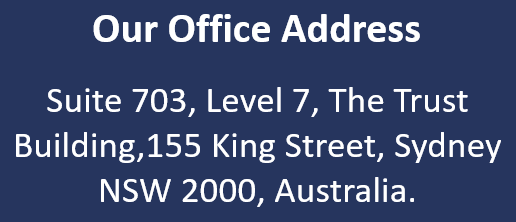SOC 2 Audit In Australia: Step-By-Step Process For Every Business
Introduction
In today’s digital age, data security and privacy are more critical than ever. Businesses that handle sensitive customer information must ensure they protect this data against breaches and misuse. One way to demonstrate this commitment is through SOC 2 compliance. This article will guide you through the SOC 2 audit process, specifically tailored for businesses operating in Australia. SOC 2, or System and Organization Controls 2, is a framework created by the American Institute of CPAs (AICPA). It helps organizations manage customer data based on five "trust service principles": security, availability, processing integrity, confidentiality, and privacy. While SOC 2 is originally American, its relevance spans globally, including Australia.

Why SOC 2 Matters?
SOC 2 compliance is not just a regulatory checkbox. It serves as a competitive advantage, demonstrating to your clients that you are serious about data security. In industries like finance, healthcare, and technology, SOC 2 compliance can be a deciding factor for potential clients evaluating service providers.
Moreover, achieving SOC 2 compliance can help streamline processes, improve data management, and enhance overall business operations.
The SOC 2 Audit Process In Australia
The path to SOC 2 compliance involves a thorough audit process. Here’s a step-by-step breakdown of what Australian businesses can expect.
Step 1: Understanding the Trust Service Principles
Before embarking on the SOC 2 audit, it’s crucial to understand the five trust service principles:
-
Security: Protecting systems against unauthorized access.
-
Availability: Ensuring the system is available for operation and use.
-
Processing Integrity: Ensuring system processing is complete, valid, and accurate.
-
Confidentiality: Protecting information designated as confidential.
-
Privacy: Managing personal information in a manner consistent with privacy principles.
Step 2: Selecting the Right Auditor
In Australia, it’s essential to choose an auditor familiar with local and international standards. Look for auditors with experience in SOC 2 assessments and a track record of working with businesses similar to yours. The right auditor will guide you through the process and ensure you meet all requirements.
Step 3: Preparing for the Audit
Preparation is key to a successful SOC 2 audit. This involves:
-
Conducting a Readiness Assessment: Evaluate your current systems and controls against SOC 2 requirements to identify gaps.
-
Documenting Policies and Procedures: Ensure all relevant policies and procedures are well-documented and accessible.
-
Implementing Controls: Put in place necessary controls to address any identified gaps.
Step 4: The Audit Process
During the audit, the auditor will evaluate your systems and controls against SOC 2 standards. This includes reviewing documentation, conducting interviews, and testing controls. The audit can be conducted over a period ranging from several weeks to a few months, depending on the complexity of your systems.
Step 5: Receiving the SOC 2 Report
Once the audit is complete, you will receive a SOC 2 report. This report provides an in-depth analysis of your controls and systems, highlighting strengths and areas for improvement. It serves as proof of your commitment to data security and can be shared with clients and stakeholders to demonstrate compliance.
Benefits Of SOC 2 Compliance
Achieving SOC 2 compliance offers numerous benefits to Australian businesses:
-
Enhanced Trust: Clients and partners trust that you are committed to protecting their data.
-
Competitive Advantage: Stand out in your industry by showcasing your dedication to security and privacy.
-
Improved Processes: The audit process often reveals areas for operational improvements.
-
Risk Mitigation: Identify and address potential vulnerabilities before they become issues.
Challenges In SOC 2 Compliance
While SOC 2 compliance is beneficial, it also presents challenges:
-
Resource Intensive: The audit process can be time-consuming and requires dedicated resources.
-
Continuous Monitoring: Achieving compliance is not a one-time event. Continuous monitoring and updating of controls are necessary to maintain compliance.
-
Complexity: Understanding and implementing the trust service principles can be complex, especially for organizations new to SOC 2.
Maintaining SOC 2 Compliance
Once you achieve SOC 2 compliance, maintaining it is an ongoing process. Regular audits, continuous monitoring of controls, and staying informed of changes in regulations and standards are essential to ensure continued compliance.
Tips for Maintaining Compliance
-
Regularly Review and Update Policies: Ensure that your policies and procedures remain current and effective.
-
Conduct Internal Audits: Regular internal audits can help identify issues before the official audit.
-
Invest in Training: Keep your team informed and trained on best practices for data security and privacy.
Conclusion
SOC 2 compliance is a vital aspect for any Australian business that handles sensitive data. It not only builds trust with clients but also enhances your business operations. By understanding the audit process and the importance of the trust service principles, you can position your organization as a leader in data security and privacy. By following the steps outlined in this guide, Australian businesses can navigate the SOC 2 audit process with confidence, ensuring they meet the highest standards of data protection.




